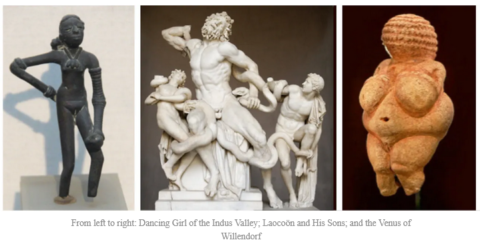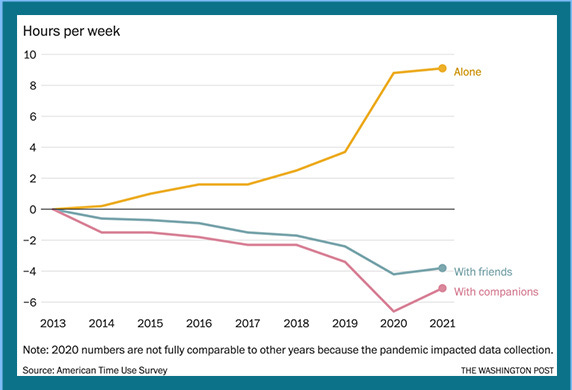My headline isn’t exactly what Ted Gioia says here (although this is only the beginning of his article, as the rest is behind a paywall) but it’s definitely an aspect of what he’s seeing:
For thousands of years, flourishing societies treated the human form with love and respect.
The connection is hard to describe with precision. But, it seems, you can’t make much progress promoting human rights if you don’t start with some degree of reverence for the embodied individual.
Even neanderthals knew about ornamentation and figurative art, but paintings of actual people, created by communities along the Nile River, some 8,000 years ago, signaled the rise of more advanced, stable institutions. It’s no coincidence that democracy and personal autonomy in Greece and Rome happened in conjunction with obsessively realistic renderings of the human body.
Much of this was lost in the post-classical world, but Renaissance artists rediscovered this passion for the human figure — which was embedded in its nurturing of science, art, and free inquiry
But something very different is happening in our own time.
I won’t offer any theories today. I’ll just share the facts — in the form of news stories, all about different subjects.
None of these stories have any direct connection with the others. Yet they fit together like the pieces of a strange puzzle. The picture they make is ominous.
Maybe you have some explanations. In the meantime, let’s just plunge in …
1. You can’t hear people talking in movies — because directors prefer to share background sounds.
“I used to be able to understand 99% of the dialogue in Hollywood films. But over the past 10 years or so, I’ve noticed that percentage has dropped significantly — and it’s not due to hearing loss on my end. It’s gotten to the point where I find myself occasionally not being able to parse entire lines of dialogue when I see a movie in a theater, and when I watch things at home, I’ve defaulted to turning the subtitles on to make sure I don’t miss anything crucial to the plot.”2. Lead vocalists are getting quieter while the sound of the instruments become louder.
“Lead vocalists have gotten quieter over the decades, compared with the rest of the band. That’s the conclusion of a new study that analyzes chart-topping pop tunes from 1946 to 2020 …”3. Anthropophobia — the fear of other people — is on the rise.
“Anthropophobia, or the fear of people, has so far been America’s most searched-for phobia this year. In that study, anthropophobia accounted for 22% of all phobias that people searched for online, a five-fold increase over 2019. And the state-by-state results affirm common stereotypes. New York’s most-searched phobia in 2020, for example, has been “philophobia.” That’s a big word for the fear of intimacy.”4. Time spent alone is rising for all demographic groups.
“According to data from the American Time Use Survey, the amount of time people spent with their friends, family and other companions was mostly unchanged between 1970 and 2013. Then, after decades of stability, the numbers began falling. By 2019, on average people were spending almost three hours less with their friends than only six years earlier, and four hours less with their family, neighbors and other companions.
“None of that time was transferred to more time with partners, children or others. All of it was swallowed up by time spent alone … Strikingly, the average American teenager today spends 11 hours fewer with their friends than they did only eight years ago, and 12 hours more time alone.”
5. Clothing retailers replace realistic mannequins with abstract forms.
“There were a ton of used mannequins sitting in retailers’ attics and storerooms. Every time they re-merchandised or remodeled, they were bringing in new mannequins to replace the old, increasingly replacing realistics with abstracts. And it wasn’t just full mannequins, it was head forms, leg forms, maternity mannequins, swimwear mannequins and all kinds of props, as well. Retailers would throw these items in the trash.”6. Social media causes children to dislike their own bodies.
“Three out of four children as young as 12 dislike their bodies and are embarrassed by the way they look, increasing to eight in 10 young people aged 18 to 21 … Nearly half of all children and young people aged from 12 to 21 questioned said they have become withdrawn, started exercising excessively, stopped socialising completely or self-harmed because they are regularly bullied or trolled online about their physical appearance.





